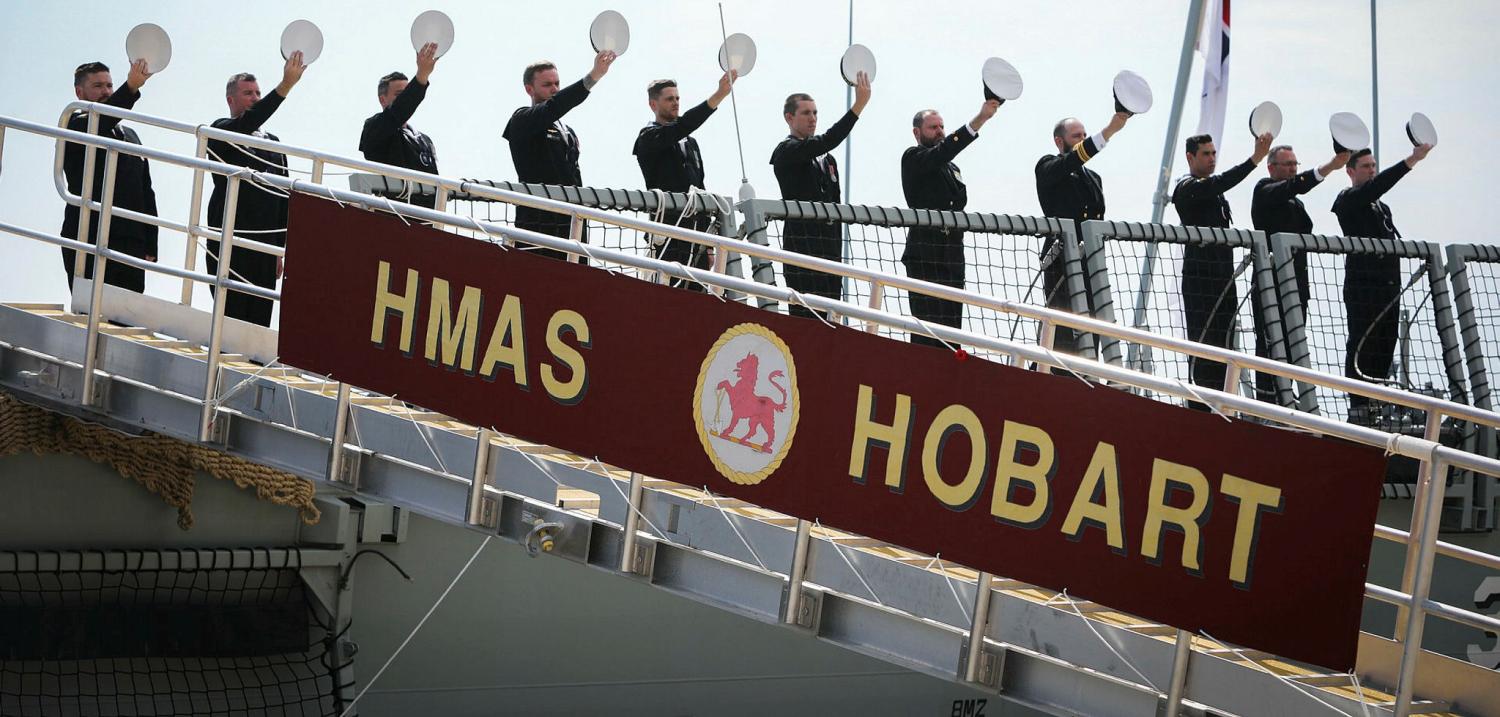Kim Jong-un has set North Korea on the path to establishing a nuclear-tipped intercontinental ballistic missile capability. We don’t know how much further the international community will push, and how the North Koreans will respond. But Kim Jong-un’s actions remind us that state-on-state conflict can still happen, and at short notice. What realistic options does Australia have in response? Key areas worth considering involve space, land and sea.
Australia has just commissioned its first air warfare destroyer (AWDs), HMAS Hobart, in Adelaide. This warship is equipped with Aegis, a sophisticated integrated naval weapons tracking system. Surprisingly enough, the AWDs will not be equipped for ballistic missile defence. But if upgraded, there appears little that would stop the Aegis-equipped Hobart and its sister ships from being capable of operating against incoming ballistic missiles. This seems an easy step to take, and sooner rather than later.
The commissioning of HMAS Hobart happened virtually at the same time as the announcement that Australia would establish a national space agency. And just yesterday, Chief of the Australian Navy Vice Admiral Tim Barrett announced that Australia's new fleet of frigates will be designed with ballistic missile defence in mind.
In Australia, most have seen the issue of ballistic missile defence as a northern hemisphere problem, but times are changing and, as American assurances come into question and Australia seeks to be more self-reliant, some fresh thinking is required on how to respond to better protect ourselves and mitigate the risk.
Understanding the basics behind the key defensive military options is an important first step. Today, the spectrum of defensive options spans the three phases of a ballistic missile’s trajectory: the boost (or launch) and terminal phases, which occur in the earth’s atmosphere, and the mid-course phase, which happens in outer space.
Once launched, intercontinental ballistic missiles (ICBM) spend a very short time in the atmosphere (for the boost and terminal phases), so the greatest opportunity to intercept such a missile is in outer space, during the twenty-or-so minutes of the mid-course phase. In this phase an ICBM climbs to an apex hundreds of kilometres above the earth’s surface prior to returning to the atmosphere in response to the pull of earth’s gravity. For this phase, the key system able to intercept an ICBM is the Standard Missile 3 (SM3). Understandably enough, the US and Japanese navies equip their air warfare destroyers with the SM3, connected to the Aegis combat system. For them, the expense has long been justified and the technology has matured.
The boost phase involves the missile accelerating to outer space under rocket propulsion. For this phase the Terminal High Altitude Area Defence (THAAD) missile defence system is considered viable. That’s one reason why South Korea’s new president, Moon Jae-in, while initially sceptical, now supports THAAD deployment.
The terminal phase involves the missile re-entering the earth’s atmosphere at speeds that are hard to comprehend – up to 21 times the speed of sound (Mach 21) - leading to a highly destructive impact on the earth’s surface. So the circumstances have to be just right for an interception to be feasible: pre-positioned launchers would have to be close to the estimated point of impact, supported by a network of cueing radars.
For this phase, there are a couple of technologies capable of interception. In addition to THAAD, the Patriot missile system is designed for land-based defence and could be deployed to defend key locations. For terminal phase BMD defence at sea, the Standard Missile 6 (SM6) has emerged as an important option. The SM6 is already integrated into Aegis systems used by the US and Japanese navies for the SM3s.
To be effective in the boost phase, however, missile defence radars have to be close enough to identify the missile trajectory virtually from launch. Alternatively, they would need to be set up in a field close enough to the likely point of impact to respond in time to the missile while descending back to earth at high speed. That might work if trying to shoot one down from just over the North Korean border. But it makes far less sense for the defence of the Australian continent, where the likely impact point is harder to discern.
The Republic of Korea has recently deployed two THAAD systems and the Japanese Government produces Patriots under licence for terminal phase ballistic missile defence. Critics dismiss such weapon systems in the Australian context as inadequate to cover the vast Australian landmass. But the technology has advanced rapidly in recent times and a more selective deployment around probable high value targets could make sense.

